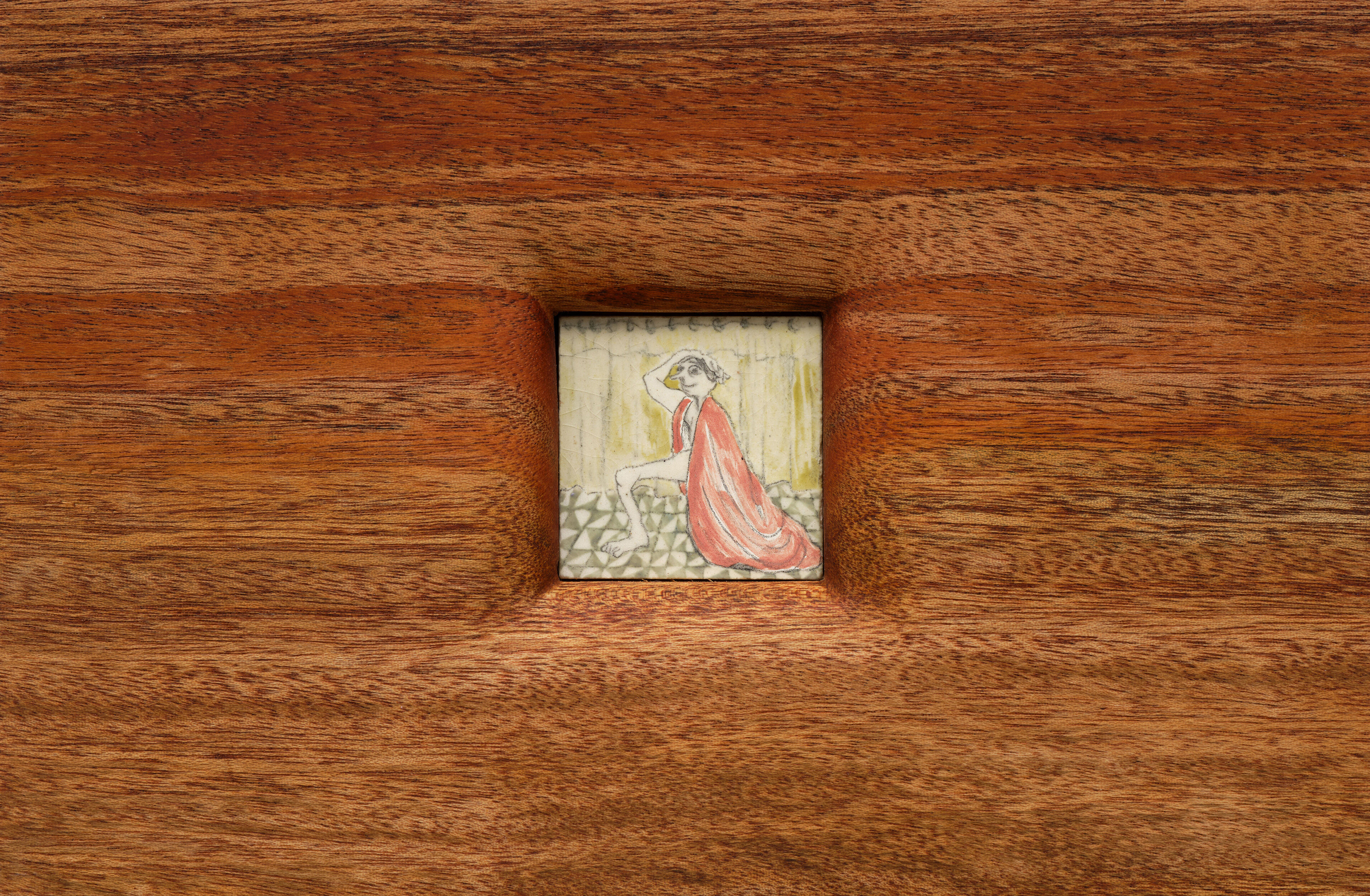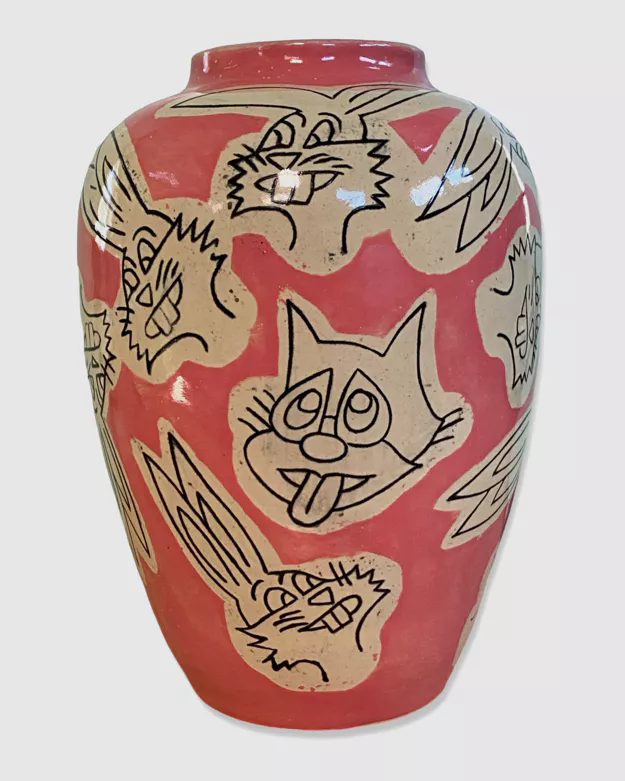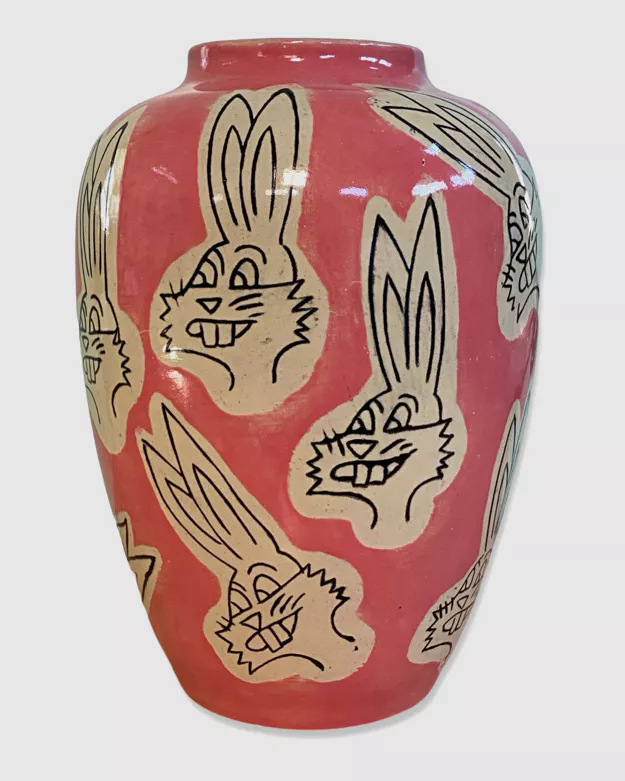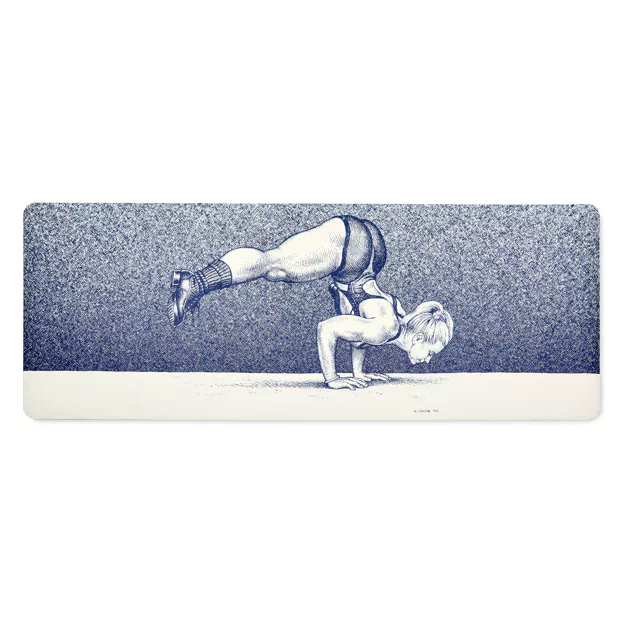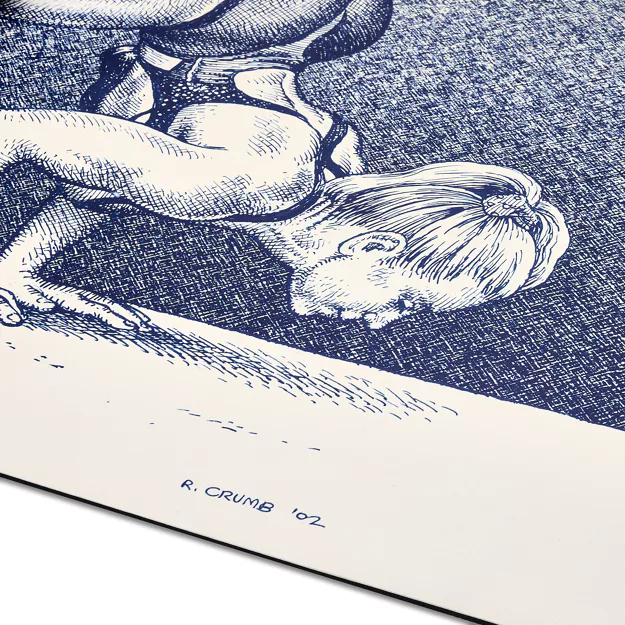About the artwork:
In a tiled room with a curtain partition, a figure strikes a powerful pose and coyly steps out of their robe, proudly flexing an altered form and “showing some leg” — a classic flirtatious trope — met by a chorus of wolf whistles. In these tile paintings, the artist blurs the boundary between two theaters: the hospital operating theater and the actor’s theater. Each porcelain tile is embedded in a mahogany surface, contorting the grain as an extension of the painted environment. The miniature scale insists upon private viewing: a visitor must do so by leaning close to see the salacious scenes as if through a keyhole in a locked door. Kettner’s characters oscillate between performing burlesque routines and shying away from meddlesome doctors. Sometimes, the doctors are pictured casting dramatic spotlights from their headlamps, while at other times, the clinical setting only implies its presence via thick rubber curtains or dizzying tiled walls. Ultimately, there is a chilling and titillating sense that the figures’ bodies are under study, demonstrating the humor and power in these most vulnerable moments.
Em Kettner’s celebratory figurative sculptures and drawings on tile subvert stereotypes by portraying disabled bodies in a range of humorous, erotic, and powerful postures. With themes touching upon intimacy and interdependence, Kettner’s meticulously crafted works feature intricate cotton weavings, expertly sculpted porcelain bodies, and hand-carved wooden supports.
About the artist:
Em Kettner’s celebratory figurative sculptures and drawings on tile subvert stereotypes by portraying disabled bodies in a range of humorous, erotic, and powerful postures. With themes touching upon intimacy and interdependence, Kettner’s meticulously crafted works feature intricate cotton weavings, expertly sculpted porcelain bodies, and hand-carved wooden supports.
Em Kettner was born in 1988 in Philadelphia, PA, and lives in Richmond, CA. She earned her BFA from the University of the Arts in Philadelphia, PA, and her MFA from the School of the Art Institute of Chicago in Chicago, IL.
Kettner has mounted recent solo exhibitions at François Ghebaly in New York, NY, and Los Angeles, CA (2024, 2022, 2021); Chapter in New York, NY (2022); Specialist in Seattle, WA (2022); Goldfinch, Chicago, IL (2020); and Harpy in Rutherford, NJ (2018).
Kettner’s work has been reviewed or featured in Artforum, Art in America, Sculpture Magazine, Contemporary Art Review LA (CARLA), Hyperallergic, and elsewhere.
She is the recipient of the Wynn Newhouse Award, the MIUSA Women’s Institute on Leadership and Disability, and an SAIC Teaching Fellowship.
